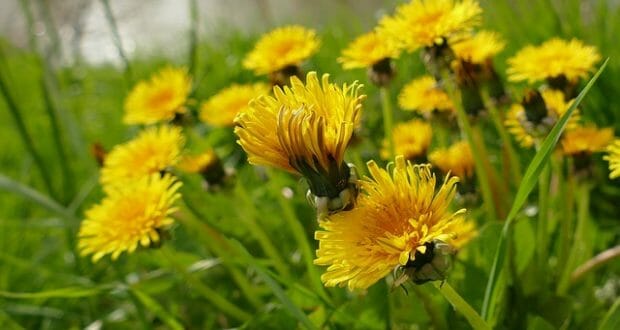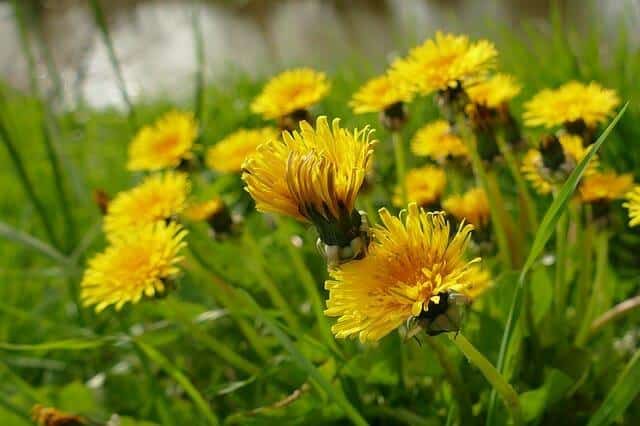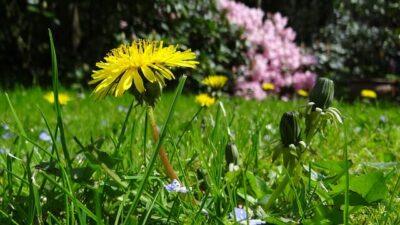In today’s world, people want everything to be neat, tidy and uniform – including their yards. The grass, we’re told, should be one smooth, green carpet.
But that’s easier said than done! Everyone knows that if you don’t pull them or spray them, “weeds” such as dandelions will be the first thing to pop up and ruin that lawn.
Perhaps the real problem here isn’t dandelions, but our unnatural expectations of what things “should” look like, as well as what constitutes a “weed.”
My grandmother loved picking dandelions out in the fields behind her home. She would collect them in her apron or a bucket and proceed to make the most amazing things.
Of course, there is no denying that dandelions can have a bitter aftertaste, especially if you aren’t accustomed to them, but given time and a few tweaks, they can be delicious.
When you consider that these “weeds” are chock full of vitamins, such as A, B, C and D, as well as minerals, including potassium, iron and zinc, it’s no wonder that our ancestors didn’t need multivitamins!
Natural Fertilizer Doubles Garden Production
Here’s how our grandmothers used them:
1. Dandelions as food
Think of dandelions as you would other leafy greens, like lettuce or spinach. This means you can use them in:
- Salads (fresh from the yard, but washed).
- Soups or casseroles (fresh or dried).
- Green juices
- Stir fry (chopped up).
2. Dandelion tea
Yes, you can buy dandelion tea in almost every health food store, but why not learn how to make your own? My grandmother used both the greens and the root. Simply boil a little more than a cup of water, add about a tablespoon of dried leaves and/or root, and cover and allow to simmer for three or so minutes. Strain and add some honey. Speaking of honey……….
3. Dandelion honey
This isn’t actually a honey; this is more of a syrup. On occasion, when honey ran low, my grandmother would make this.
Start off by gathering a bunch (perhaps four cups) of dandelions, roots and all. Wash and place in a pot of boiling water. Allow to boil for about 3 minutes; cover, and turn off the fire. Allow to soak overnight. Strain out the dandelions, and put back on the stove under a very low flame. Add about a cup of sugar and the juice of one lemon. Leave the pot uncovered and simmer slowly for about 30 minutes or until it reaches a syrup-like consistency. Store in a glass jar and use like you would honey. This tastes so good, you won’t believe it! Try it on pancakes for a really different taste!
4. Dandelion wine
Everyone’s favorite, right? If you really want to taste some homemade goodness, you simply must try dandelion wine. For this recipe, you will only need fresh flowers, no roots or leaves. Be sure to pull the green little stem at the bottom of the flower. All you want are the yellow petals (nothing green or the wine is very bitter)! There are dozens of recipes online, including this one.
5. Medicinal uses
These little yellow flowering plants have a wide variety of medicinal uses:
- Lower blood pressure.
- Calm an upset stomach.
- As a mild laxative.
- Remove warts.
Our ancestors used dandelions for many years before they had access to doctors or pharmaceuticals. If the unthinkable should happen, a little bit of knowledge about this important little plant will go a long way.
Keep in mind that dandelions are a natural diuretic, so if you are already taking diuretics or any other prescription medicines, you should check with your doctor or pharmacist.
Dandelions greens are at their most tender and delicious when you pick them before they start to flower. If they flower before you pull them, don’t worry! They will just need to be boiled or steamed a bit longer to make them softer. Or, you can still dry the leaves, flowers, and roots for later use.
And one last reminder: If you collect dandelions in the wild, or from a neighbor’s yard, be sure you aren’t collecting plants that have been sprayed with pesticides or where systemic pesticides have been applied.
How do you use dandelions? Share your tips in the section below:


